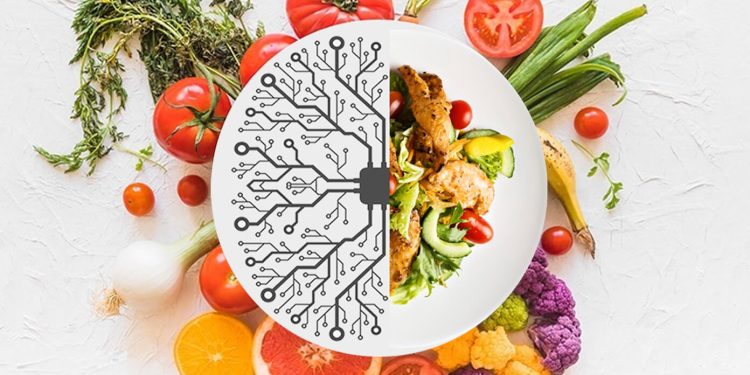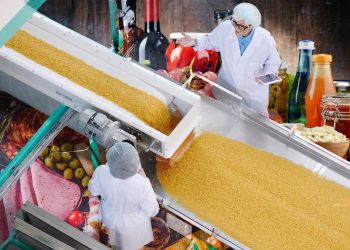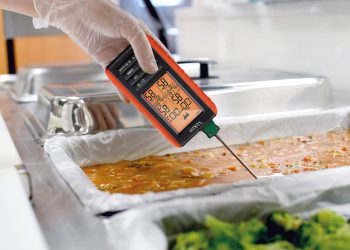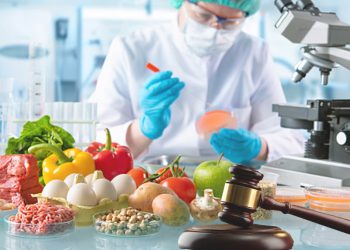As the Food and Beverage industry suffered a big hit due to the Covid-19 pandemic, it prompted the F&B businesses to digitize their operations with the use of AI and other modern technologies. After the implementation of AI, F&B enterprises have been able to maximize their efficiency and achieve significant gains. AI’s impact in the industry is such that artificial intelligence in the food and beverage market is expected to reach $29.94 billion by 2026.
AI applications in the F&B industry are expanding rapidly and making our food smarter – this is the topic of our discussion in this article today.
A shift in market trends post-covid-19
The covid-19 pandemic not only harmed people’s health and quality of life but also weakened the global food supply chain and the food and beverage industries. The industry faced several challenges due to Covid-19, including supply chain disruptions, safety, disaster management, awareness, training, response, re-forming business models, technological advancements, and digitalization. Furthermore, consumer behavior toward food has changed. They now appreciate the importance of sustainability and local preferences and are more health-conscious than ever. In this altered and fast-paced market, there is no room for error. Inability to live up to consumer expectations and failure to comply with regulatory guidelines can severely hamper a brand’s reputation. AI is helping brands adhere to the ever-changing regulations, fulfill customer expectations, beat challenges, and improve food quality and availability.
Better food quality
With the help of AI integration, the F&B companies can maximize efficiency in quality control. Using data and sophisticated analytics, AI has become capable of handling challenges specific to the F&B industry, including – the risk of contamination and the lack of uniformity among products.
Sensors, scanners, lasers and x-rays analyze collect data, which is analyzed to allow manufacturers to make real-time modifications on the factory floor. Using facial recognition software, products can be scanned for indications of a lack of uniformity and other quality markers. Sensors called “electronic noses” can detect or “smell” potential pathogens in raw food. Other varieties of sensors can record parameters, such as – temperature, light, humidity, etc., to alert the system of changes and make the necessary amends. Capturing this data is also crucial for FDA and FSMA compliance.
AI and ML capabilities can also improve the food quality at the farming stage. For example, MIT and Cognizant jointly developed a technology using AI to ascertain the best conditions for growing basil to enhance its taste.
New product development
A variety of recipes and innumerable ingredient combinations have been developed in the past few years, but not all products hit the right chord with the consumers. With the help of AI’s predictive capabilities, manufacturers and innovators can determine which products will succeed in the market. With AI-powered recommendation systems, manufacturers can create consumer-driven products for better chances of success in the market.
A plethora of AI innovations, including the inverse cooking algorithm, consumer research, API technologies, and NLP, are helping consumers to factor in their health and taste preferences.
Gastrograph AI is a SaaS platform that can reliably measure flavor. It first gets people to try new foods and drinks and enter their impressions into the app. Then the inputs from consumers are analyzed to gather insights from it. This AI-powered system can predict consumer preferences utilizing sensory intelligence within seconds.
Data has enabled AI to recognize flavor combinations used by different demographics. This information can be valuable for manufacturers to develop new products for different consumer segments. IBM and Kerry have partnered to help F&B businesses identify consumer patterns with the help of predictive analytics. This technology shortens the product creation process – from ideation to commercialization.
Preventing food recalls
AI-powered sensors can provide real-time feedback right in the plant. This means F&B businesses don’t have to wait three to four days for laboratory results. The software can alert manufacturers if something unusual happens. These systems can be customized to fit manufacturers’ needs and even provide directions to employees on the actions to take if an issue is detected.
It can also ensure the workers follow sanitation protocol. For example, it can check if workers are wearing the proper gear to avoid food contamination.
AI can track post-distribution product quality after a product is transported out of the warehouse.
Companies can use NLP to track customer reviews, feedback, complaints, and other data to detect the issues on time and get ahead of possible recalls.
Preventing food wastage
The issue of food waste has been one of the biggest challenges hounding the industry. F&B companies have been figuring out ways to meet food wastage challenges head-on. AI can be a very effective weapon in their arsenal against food wastage. Let’s look at some real-world examples:
TOMRA’s food peeling and sorting robots use machine learning to cut down food wastage. Precision cutting increases the number of usable products.
The F & B sector uses 30% of the water and energy budget for cleaning purposes. A self-optimizing cleaning program can help optimize the use of resources.
Therefore, investing in AI will be crucial for the businesses in the F&B sector to augment their quality and make regulatory strategies even more robust while boosting profitability.
Final words
The potential of this technology is limitless. That’s why experts from all corners of the world are striving to find the solutions to the biggest problems of the F&B industry using this fantastic technology.







